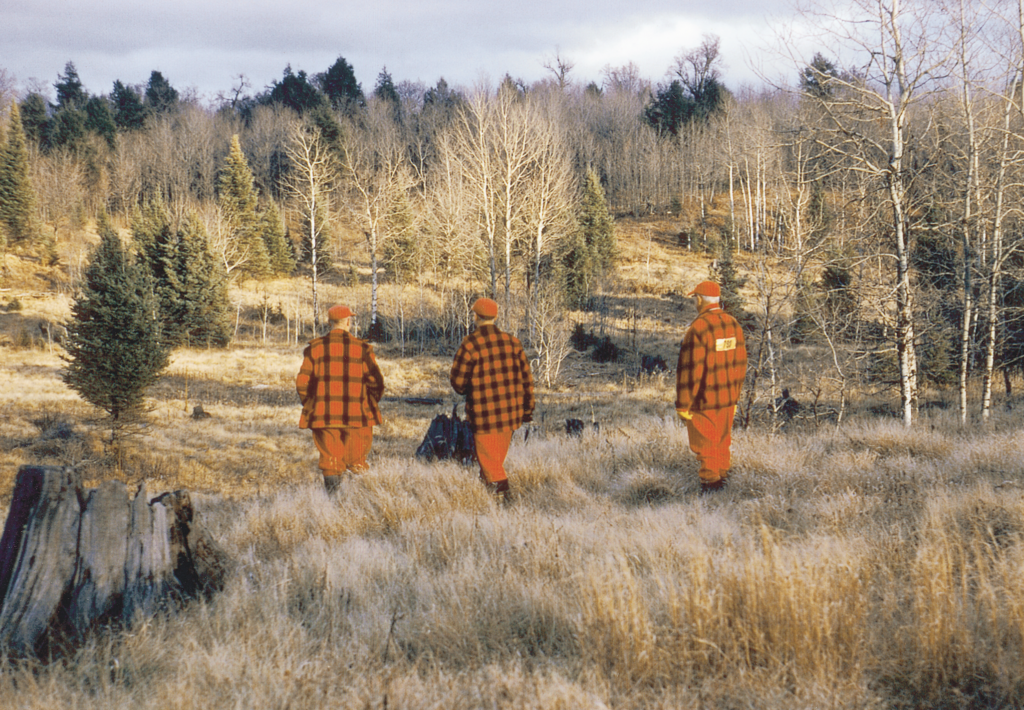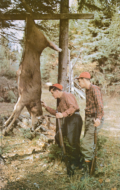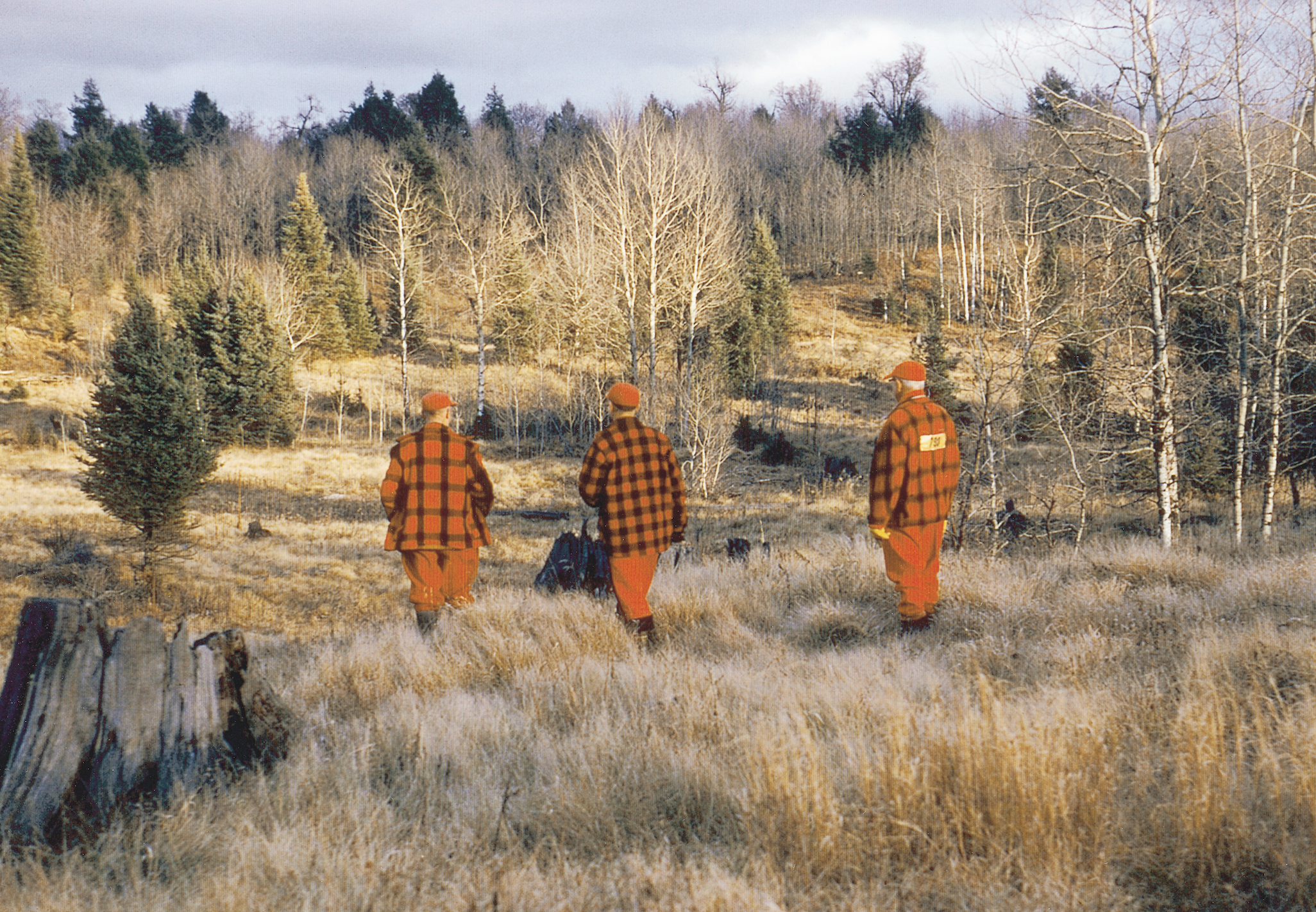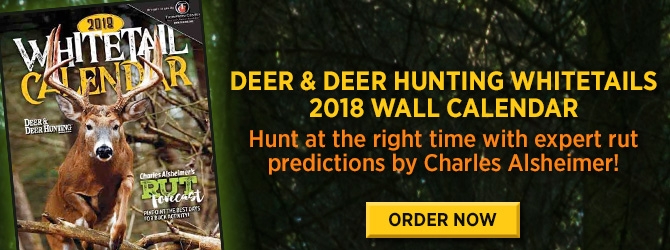
Deer hunting heritage runs deep for a Wisconsin hunting gang gathering on opening day to celebrate the arrival of another whitetail season.
Five-thirty a.m. It was 10 below zero and 6 inches of new snow had fallen the previous day. And it was the opening day of Wisconsin’s deer season. Pa was pounding on the stovepipe that thrust up through our upstairs bedroom, which was his way of waking my twin brothers and me. According to Pa, with the possible exception of Christmas, opening day of deer season was the most important day of the year. Bigger than birthdays, anniversaries and Thanksgiving. Bigger even than opening day of fishing season.
I grabbed up my clothes, ran along the frigid hall of our old farm- house, down the stairway to the woodstove that Pa had started before heading to the barn for the morning milking. Quickly dressing, I ran out to the barn where Pa had already begun milking our small herd of dairy cows. By 1950, we had a milking machine, but Pa insisted that when he took the machine off a cow, each had to be “stripped,” meaning milking by hand the last few squirts the cow had to give. Pa firmly believed that the last drops of milk from a cow had the most cream.
But on this cold morning, my thoughts were not about cows and cream, but about deer and deer hunt- ing. In 1950, I was an old pro at hunting deer, at least that’s what I thought because I had been doing it since I was 12 and this would be my fourth year. It was the first year for my more than a little excited 12-year-old twin brothers, Donald and Darrel.

STEEPED IN TRADITION
As I milked the cows, I thought about the previous night, the traditional gathering of the hunters in the neighborhood, all farmers, to talk about strategy for opening morning. As I remember the group, it consisted of Bill Miller, Jim and Dave Kolka, Pa, my two brothers and me.
Several things were different about deer hunting during the 1950s in Waushara County, Wisconsin, compared to today. First, there were few deer in central Wisconsin. The “serious” deer hunters, at least that’s what they called themselves, trekked off to Wisconsin’s Northwoods, where the deer herd was considerably larger than in our part of the state. These self-described serious hunters spent a week in the woods in a little shack, drinking beer, playing cards, lying to each other, and yes, occasionally shooting a deer. Of course none of them was a farmer who had to milk cows twice a day, year-round.
Sometimes, when we mentioned to Pa how nice those guys had it, hunting for a full week with no cows to milk, he would point out that even if they were lucky enough to bag a big buck, the meat would be so tough you couldn’t cut the gravy. “All those deer in the North live on jack pine,” he said. “Deer around here eat alfalfa and corn. Lots better meat.”
The second thing that was different during the 1950s was the absence of “No Trespassing” signs. We could walk for miles across the fields and woods without anyone yelling, “Can’t you see this here land is posted?”
Another major difference: We hunted in groups. There were no deer stands, no fancy little houses standing on stilts with heaters inside, no little plastic platforms precariously hanging from a tree. Today, we wait for the deer to come to us. In those days, we went looking for the deer.

THE GAME PLAN
As I milked the cows, I thought about the discussion the previous night as to who would drive (meaning walk through the brush and brambles) and who would stand (waiting for a deer to appear), and where we would do the first drive, and why that one drive was better than a different one. Considerable argument resulted around the latter question. The oldtimers in the group — Pa had 38 years of deer hunting experience, Bill Miller had nearly as many — each had an idea as to where we might best kick up a deer.
Of course most of the discussion centered on previous years’ hunts, and who had shot a deer and how big it was (after a few years a 6-point buck had grown to a 10-pointer), and who had a standing shot and missed. Those who had missed a shot, especially if the deer had been a sizable buck, were forever reminded of this unforgiveable act. “How could you miss a standing shot at 50 yards (it was likely 150 yards)?”
With the milking done and the cows fed, we hurried to the house, ate a big breakfast, climbed into our 1936 Plymouth and headed out to where we had eventually decided would be the first big drive of the season. Bill Miller carried a .30-30 Marlin (“No gun ever better,” according to Bill).
Pa had a .30-30 Savage with a rotary magazine. Donald and Darrel each carried shotguns loaded with slugs. I used Pa’s double barrel 12 gauge, (make unknown) that weighed a ton and had a barrel nearly as long as I was tall. My twin brothers were drivers, no questions asked because this was their first time hunting and first time hunters never stood and always drove. Jim Kolka, Dave Kolka, Pa and Bill Miller were standers. I got to make the first drive of the season along with my brothers — why I got the short stick to drive I don’t remember.
THE HUNT
Pa dropped us off at the field road just west of Paul Krueger’s farm. The drive would end at the road climbing Miller’s Hill, about 2 miles distant. It was dark, it was cold and the temperature still hung around five below. My brothers and I were instructed to wait at least a half-hour before we began our drive.

A cold November sun was trying to lift over the horizon as my brothers and I began the drive, each with loaded shotguns at the ready. I knew from previous years that deer sometimes turn back and run toward the drivers rather than in the direction they were supposed to take.
Each of us had our distinctive call as drivers. Darrel tried to sound like a dog barking, Donald had an eerie non-identifiable call, and I used a loud “ha-humph” that I had been practicing. We would yell our call every minute or so as we hiked through the tangle of brush and berry bushes, on our way toward Miller’s Hill. One important reason for calling, in addition to kicking up deer and sending them toward the standers, was so we knew exactly where the other drivers were, in case we had an opportunity to shoot at a deer.
After a hundred yards or so of yelling, stumbling and walking around tree branches, I wished I had worn less clothing. I began to perspire. A couple of hundred yards farther I spotted a deer track in the fresh snow. A big track. A 10-point buck, my young mind quickly assumed.
And then I heard the shot. A sharp crack pierced the quiet of the cold morning. A .30-30 rifle shot I recognized. Either Pa or Bill Miller. I hurried on, as did my brothers, yell- ing our calls and waiting to see the size of the deer that had been shot. Finally, we arrived at the road going up Miller’s Hill. Bill, Pa and the Kolka boys stood there talking.
“So who shot the deer?” I asked, nearly out of breath.
“No deer,” said Bill. “Saw one. Too far away for a decent shot.”
Of course none of us knew if the deer had trotted right in front of Bill or not. Always good not to have a witness when you shoot at a deer and miss.
We made several more drives that weekend with similar results. Pa, always the optimist, said at the close of the season. “Next year will be better.” It was.
— Jerry Apps is Professor Emeritus at the University of Wisconsin and the author of more than 35 books, many of them on rural history and country life.


